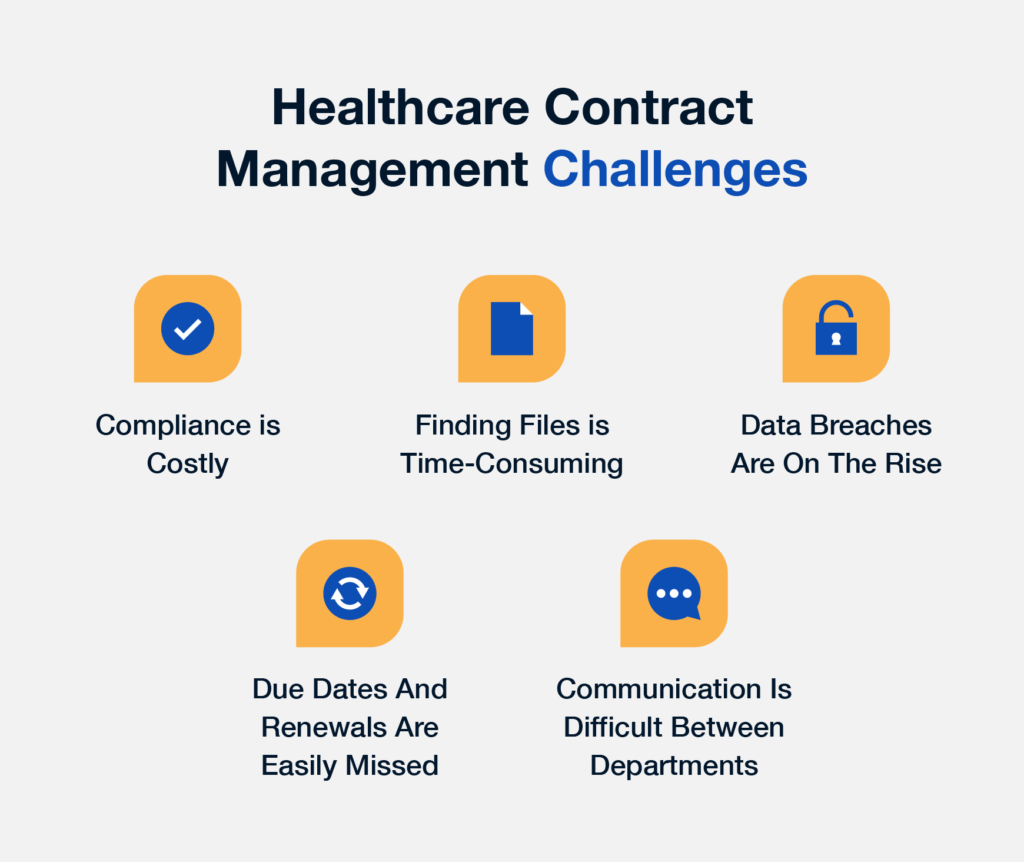The negotiation process between insurers and healthcare providers is crucial for defining reimbursement rates, service coverage, and quality standards. With healthcare costs continuing to rise, these negotiations are more important than ever to ensure providers remain financially viable while offering quality care to patients. Let’s explore more complexities of insurers negotiating contracts with healthcare providers, understand and implement best practices, and examine real-life examples that highlight both the challenges and strategies involved in securing fair agreements.

The Essential Payer Contract Negotiation Process
Preparation and Data Gathering
A successful negotiation begins with extensive preparation on both sides. For healthcare providers, this means gathering data on costs, patient volumes, and offered services. Insurers focus on their financial needs, network requirements, and desired provider qualities. For example, when Kaiser Permanente negotiated with a specialized network of rural providers in 2022, they took into account specific data on service needs and costs to ensure the right balance of provider representation across rural areas.
Identifying Key Issues for Both Sides
As negotiations progress, insurers and healthcare providers identify critical issues to address, including reimbursement rates, scope of services, and quality metrics. For example, when discussing oncology services, insurers may prioritize cost control due to high treatment costs, while providers negotiate to include essential and costly services. In 2020, Blue Cross Blue Shield of Texas and St. Luke’s Health failed to reach an agreement on these issues, which led to temporary termination of their contract, affecting thousands of patients.
Negotiation Process and Setting Terms
Negotiations typically involve multiple rounds, focusing on reimbursement rates, service inclusions, and legal provisions. In-person meetings, phone discussions, and written correspondence are all common formats. Key negotiation points may include:
- Reimbursement Rates: Providers strive for rates that reflect their costs, while insurers push for cost containment.
- Quality Metrics: Insurers often include metrics for patient satisfaction and adherence to guidelines.
For example, UnitedHealthcare has recently started using quality-based incentives to ensure providers meet patient care standards, which are linked to reimbursement adjustments.
Key Considerations in Contract Negotiation for Providers and Insurers
Payment Terms and Balancing Costs
Securing fair payment terms is a primary goal when insurers negotiate contracts with healthcare providers. Rising costs across healthcare create a need for reimbursement rates that at least cover operational expenses. A 2021 report by the American Hospital Association showed that hospital expenses rose by 20% over two years, yet reimbursement rates did not keep pace, creating financial strain for many providers.
Quality Metrics and Patient Outcomes
Many payer contracts now include quality-based measures, incentivizing providers to achieve specific care standards. According to a 2023 study by Modern Healthcare, 68% of insurers now link a portion of reimbursements to quality metrics. For instance, patient satisfaction, readmission rates, and adherence to clinical guidelines are often emphasized. UnitedHealthcare has introduced incentives for providers who demonstrate high-quality outcomes, rewarding them with improved payment rates.
Ensuring Network Adequacy and Patient Access
Network adequacy ensures patients have sufficient access to healthcare providers, especially in underserved areas. Insurers negotiating contracts with healthcare providers in rural or specialty areas must factor in access and representation. In one case, Cigna negotiated higher reimbursements with a provider network in rural Arkansas to ensure access for patients in remote locations, demonstrating the need for network adequacy in contract considerations.
Overcoming the Challenges in Contract Negotiations
Mapping-in Complex Healthcare Services
The diverse nature of healthcare services makes negotiating contracts with insurers challenging, as it’s difficult to set fair rates for a range of services—from routine visits to high-cost procedures. Providers must negotiate fair rates for specialized procedures, like complex surgeries, while insurers aim to control costs.
Regulatory Compliance and Constant Adjustments
With frequent regulatory updates, staying compliant is essential but challenging. For example, the recent changes in CMS’s 2024 capitation rates have required providers to revisit existing contracts to adjust rates and stay compliant. According to the Centers for Medicare & Medicaid Services, each policy change can trigger a new round of negotiations as both parties strive to align with the updated regulatory landscape.
Addressing Power Imbalances in Negotiations
In highly consolidated insurance markets, smaller healthcare providers face power imbalances that limit their negotiation leverage. A 2021 AMA report revealed that over 70% of metropolitan areas have concentrated insurance markets, which gives insurers a stronger position. In response, some providers have begun forming regional networks to strengthen their bargaining power and secure fairer terms.
Benefits of Outsourcing Contract Negotiations
Many healthcare providers find that outsourcing contract negotiations provides them with a strategic advantage. An analysis by the Medical Group Management Association (MGMA) in 2022 indicated that 35% of small practices outsourced their negotiations to improve outcomes and streamline operations. Here are key benefits of outsourcing:
- Specialized Expertise: Contracting firms bring a deep understanding of industry trends and regulations.
- Operational Efficiency: Providers can focus on patient care while outsourcing negotiations.
- More Cost-Effectiveness: Experienced firms use analytics and economies of scale to secure cost-effective contracts.
A great example is a mid-sized network of clinics in California that hired an external firm to negotiate with Aetna. The result was a 12% increase in reimbursement rates, achieved by leveraging detailed analytics and seasoned negotiators.

Knowing When and How to Negotiate Contracts with Insurers
Take Advantage of Scarcity of Healthcare Services
In regions with limited provider options, healthcare providers hold strong bargaining power. Insurers are motivated to secure these providers for patient access. For instance, a primary care network in rural Missouri negotiated higher rates with Cigna, using their unique position as the only accessible provider in the region to their advantage.
Capitalize on Specialty and Unique Services
Specialty providers have added leverage, especially in high-demand fields like oncology or behavioral health. According to Becker’s Hospital Review, specialty providers can often secure up to 15% higher reimbursements. Providers offering unique or niche services should highlight their specialty’s value and use this to strengthen their position.
Align with Mutual Business Interests
Providers should stay informed on insurers’ business goals and find alignment. For instance, if an insurer is expanding telehealth services, a provider well-versed in telehealth can use this mutual interest to negotiate a contract with terms that align with the insurer’s goals. Mutual benefit creates a solid foundation for successful negotiations.
Practical Tips for Providers in Negotiating Contracts with Insurers
- Do Your Research: Thoroughly investigate the insurer’s goals and needs. Knowing where their priorities lie can help find points of leverage.
- Understand Your Value: Providers should be clear on their unique offerings, location advantage, or specialty expertise.
- Stay Flexible on Financial Risk: Accepting value-based models, where providers are compensated based on patient outcomes, can offer negotiation flexibility.
- Consider Walking Away: If a contract isn’t favorable, providers may choose to walk away. Cleveland Clinic used this strategy effectively in 2021, opting not to renew a contract with Anthem due to unsatisfactory reimbursement terms.
The Growing Importance of Value-Based Reimbursement Models
The healthcare industry is increasingly moving towards value-based reimbursement models. Unlike the traditional fee-for-service model, which pays providers based on service volume, value-based care emphasizes quality outcomes. According to the American Journal of Managed Care, 57% of providers in value-based contracts face challenges, as they must track detailed patient metrics and take on financial risk. However, those who meet quality benchmarks are rewarded with improved reimbursement rates, making it a viable option for flexible negotiations with insurers.
Understanding Arbitration and Right to Litigate
Many contracts include arbitration clauses, which can benefit insurers by limiting providers’ ability to take disputes to court. However, this limits providers’ options if they disagree with arbitration outcomes. The Bryant Legal Group, which represents healthcare providers, recommends negotiating for the right to litigate. Providers with this flexibility can more effectively protect their interests in disputes, which is critical in markets with significant insurer leverage.
Key Steps in the Insurance Contract Negotiation Process
Read and Analyze the Contract
Providers should review contract terms thoroughly, focusing on clauses for reimbursement rates, quality metrics, and termination policies. A recent survey showed that 38% of providers faced financial losses due to not fully understanding contract terms before signing.
Build a Database of High-Volume Codes
To enhance negotiation power, providers should maintain a database of frequently billed CPT codes. For example, a pediatric practice in New York leveraged its high-volume vaccine codes to secure better reimbursement rates from BCBS, which accounted for a significant portion of their revenue.
Identify and Prioritize Largest Payers
Focus efforts on major insurers like Aetna, BCBS, and UnitedHealthcare. Targeting high-volume payers can yield the greatest financial impact. Providers can use explanations of benefits (EOBs) to compare reimbursement rates and identify discrepancies.
Use Data to Highlight Value
Providers who demonstrate strong patient outcomes, satisfaction scores, or specialty expertise increase their negotiation leverage. Data-backed outcomes can significantly impact insurers’ willingness to adjust terms favorably.
Conclusion: The Importance of Mastering Insurers Negotiating Contracts with Healthcare Providers
The stakes of contract negotiation are high. As healthcare providers face mounting costs and insurers seek cost-efficient partnerships, understanding the intricacies of contract negotiation is vital. By preparing thoroughly, using leverage effectively, and considering external negotiation support, providers can secure favorable contracts that ensure financial viability while delivering the quality care their patients depend on. Insurers negotiating contracts with healthcare providers will continue to shape the healthcare landscape, making it crucial for providers to master the art of contract negotiation.
If you are considering negotiating your health plan contract, don’t do it alone. Hire the top Legal Group of your town, or simply reach out to us as we have the expertise to help you get the most out of your health plan contracts and can help you negotiate a contract that works for your practice’s needs.




